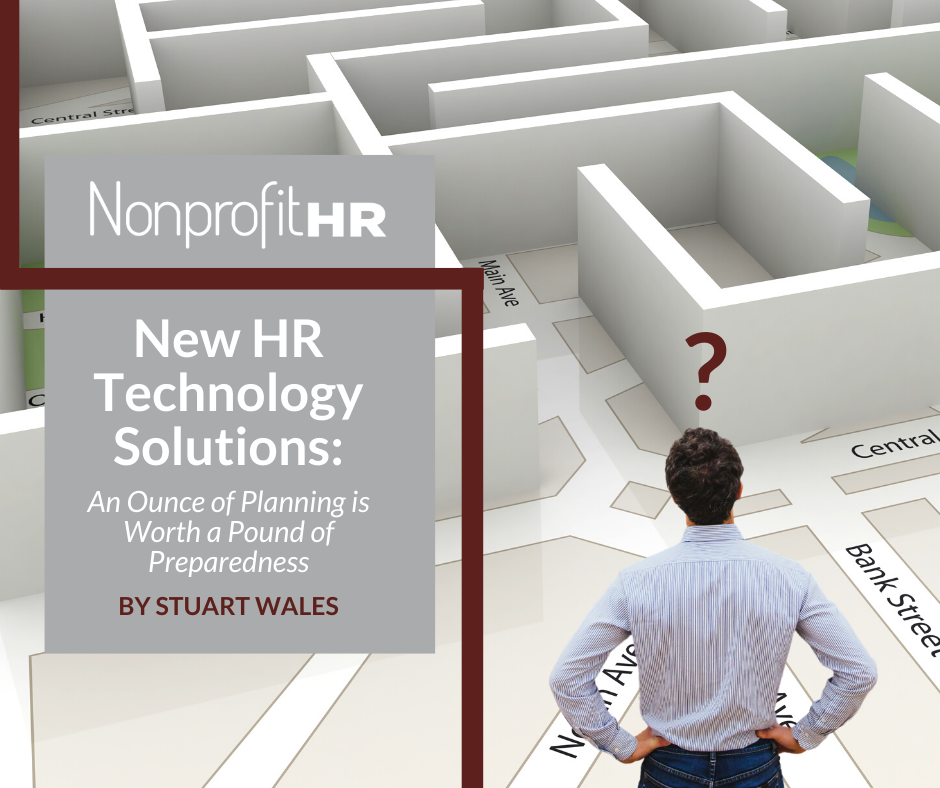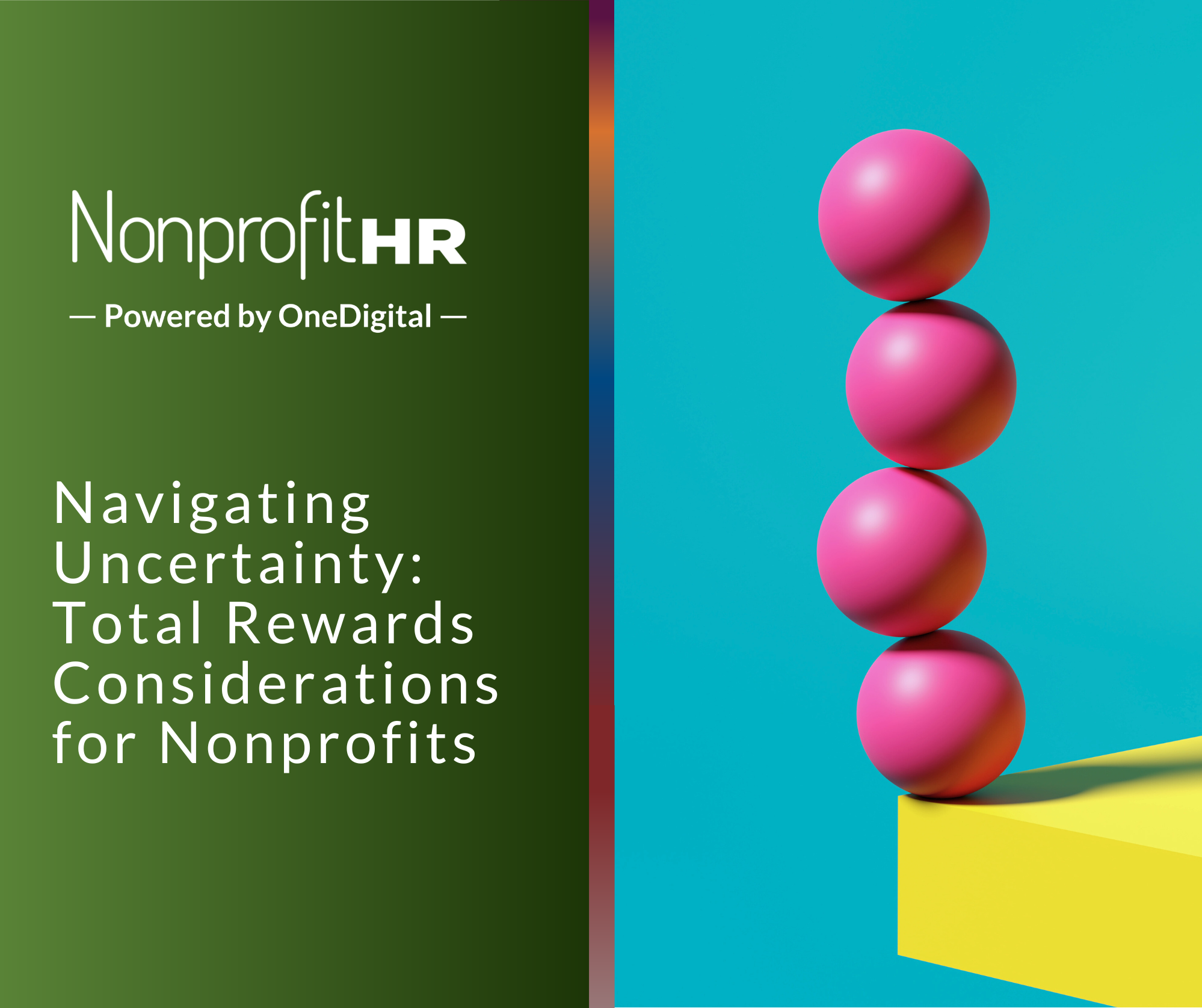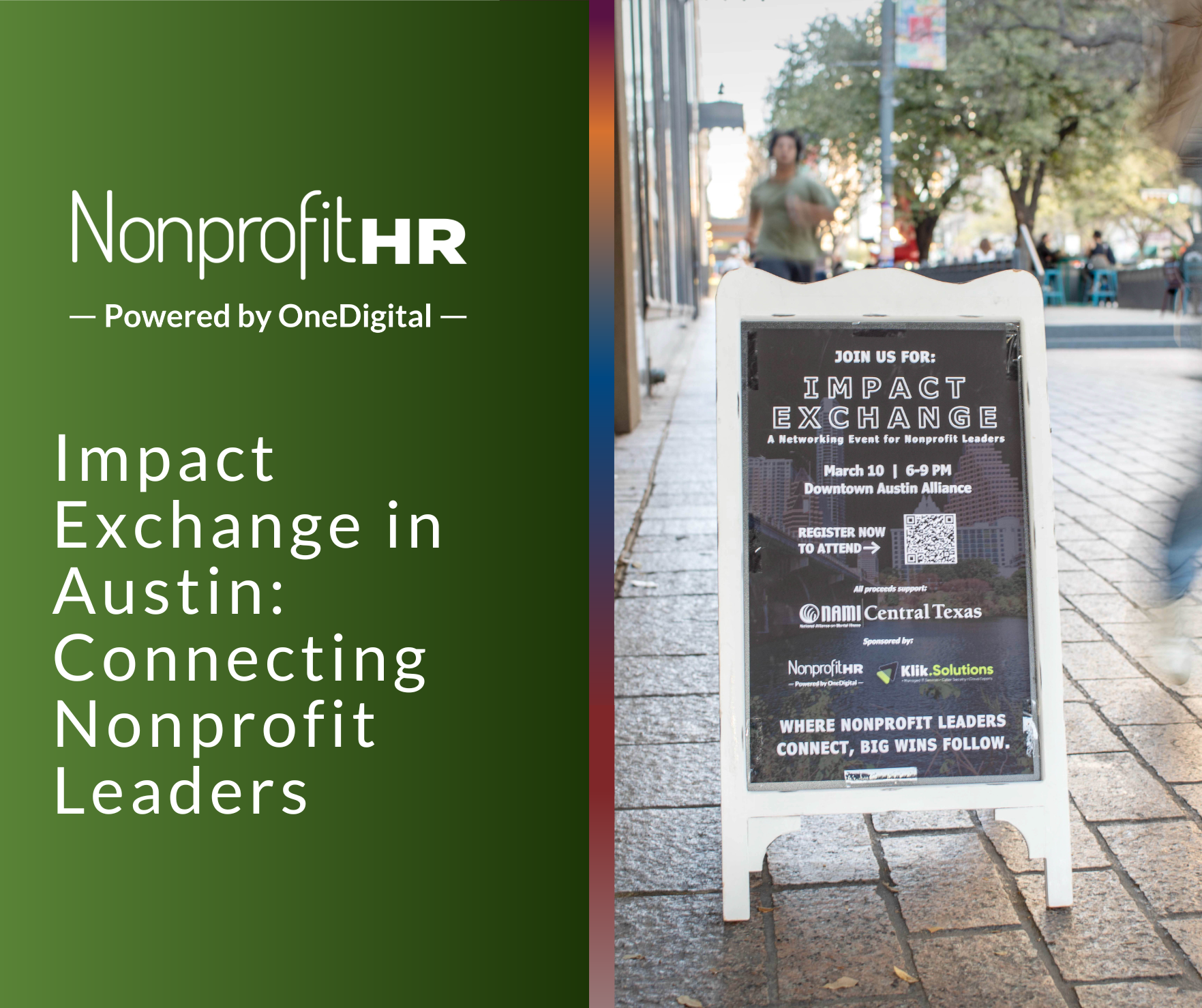WTOP: 5 ways nonprofits can…
Part 3: HR Technology"
The past few years required that HR professionals quickly adapt to an ever-changing landscape, but the unprecedented events of the last year prompted an even more rapid shift away from traditional HR practices. From compensation and benefits to HR technology, traditional approaches to total rewards have been expanded to include more flexible, equitable and efficient people-focused solutions.
Many organizations are contending with the rise of remote work as the COVID-19 pandemic made virtual (think virtual meetings, telehealth/telemedicine) more commonplace. This upsurge of virtual work now requires that compensation practices are flexible enough to accommodate an increasingly mobile workforce while remaining compliant to the unique restrictions mandated by different jurisdictions. It also requires that HR systems can support virtual operations across states. Benefits practices are being shaped by new legislation including the CARES Act and new COBRA Premium subsidies due to COVID-19 and a wider effort to improve the employee experience through low-cost perks and equitable policies. From an equity standpoint, these changes are meant to allow for differences in individuals and family structures. Finally, HR technology is propelling organizations to abandon analog files and improve the service-oriented nature of HR while increasing efficiencies.
Taken together, these trends have resulted in more people-focused and service-oriented total rewards practices. In this series, we will present in further detail trends in compensation, benefits and HR technology.
Part three on HR Technology is presented below. View part one (compensation) or part two (benefits) of the series.
Using HR technology to transform HR into a service-oriented practice
Successfully managing and retaining top talent requires greater focus on the employee experience. For this reason, many employers seek to improve the employee experience by taking more processes online. In recent years, this means that organizations need systems to accommodate more remote work and to allow for increased flexibility for employees that work from home. For example, there has been a greater push within the last year toward online open enrollment due to the need to meet the requirements of virtual work environments. Another HR tech-related trend focused on the employee experience is the rise of technology that allows for precise case management practices and basically serves as a ticketing system for HR, where organizations can track inquiries that come in and monitor how long it takes for HR to respond. A range of data can be collected in a case management system depending on how they are configured. Systems can capture plan design or compliance, general employee relations, benefits issues, compensation issues or policy-related issues.
As transactional HR processes are increasingly automated, there is now a noticeable shift in focus to regard service delivery as a function. HR Service Delivery assists and delivers services to employees at all phases of the employee lifecycle. HR Service Delivery technology differs from the traditional methods, phone calls and email because it provides the technological infrastructure needed to provide employees access to important HR information at the click of a button. For HR staff, the technology also allows for the tracking of incoming requests, increased focus on communication and decreased administrative clutter. For other employees, it offers transparent on-demand self-service access to documents, pay stubs and company information; allows employees to make leave requests; grants immediate access to update personal information; and allows employees to view scheduling and payroll information. Ultimately, the goal is to drive the value of HR as a service delivery function, as opposed to a transactional function. However, as we continue moving toward a service delivery model function, some organizations are still struggling with compliance issues simply because they no longer have the time to spend on those areas of HR anymore.
Within the area of HR tech, some modules of focus have moved to the forefront. Learning and Development (L&D) used to be a popular module, in theory (more on that later). However, performance management continues to be on an upward trend as more organizations move toward a continuous performance management model. In fact, performance management modules are now the most popular after payroll. Why? Because organizations now need the tools to facilitate that kind of model including the ability to document, track and get an overall bird’s eye view of performance. Organizations also need to allow for more visibility on how it is moving forward instead of consistently looking back. Regarding L&D, this module continues to lag because it is often done in an ad hoc way. For example, most organizations resort to a policy that gives $2,000, or whatever the organization can afford, toward an employee’s personal or professional development fund. L&D efforts do not tend to go beyond that. Translation of the skills enforced in specific learning courses or paths to competencies for a given job, or job family, are rare.
Finally, a current major headache for HR tech in the virtual environment is capacity, especially for small and medium-sized organizations. Capacity in the sense of HR tech is use functionality and understanding the functionality available. Organizations often hire someone to put a skeleton infrastructure in place just to have something. But what is implemented is typically the bare bones of configurations where the technology is merely used as opposed to understood and maximized for its full scope of available features. Due to a lack of capacity, a lot of employers do not keep up on what new features might be available to them. So, they stick within a particular vendor for a long period of time and may not know that they now have access to electronic workflows around payroll and employee changes. With that said, organizations are challenged to go beyond just using a system to actively paying attention to the communications from their vendors. Vendors understand not only what the organization is currently using, but also what it is spending money on. In this way, it is in the vendors’ best interest to make sure that organizations are getting the best value out of the programs they use.
As with smaller organizations, larger organizations also face unique challenges. For example, larger HR teams can be completely siloed. By role and function, each individual on the team tends to work in their own systems and does not necessarily talk to each other. This creates the challenge of making sure that there is contact between all those different systems, and not just from a transactional standpoint, to collaborate and tie all that data together.
Ultimately, to get the full benefits of HR tech, look at the analytics that inform decisions around what your organization can do in a service delivery model. Also, assess if your organization needs to do more work on specific modules, such as L&D or succession planning. It is also worthwhile to consider the various data pieces that may have disparate systems as it becomes more challenging to make informed decisions with inaccessible data.
View part one (compensation) or part two (benefits) of the series.

































